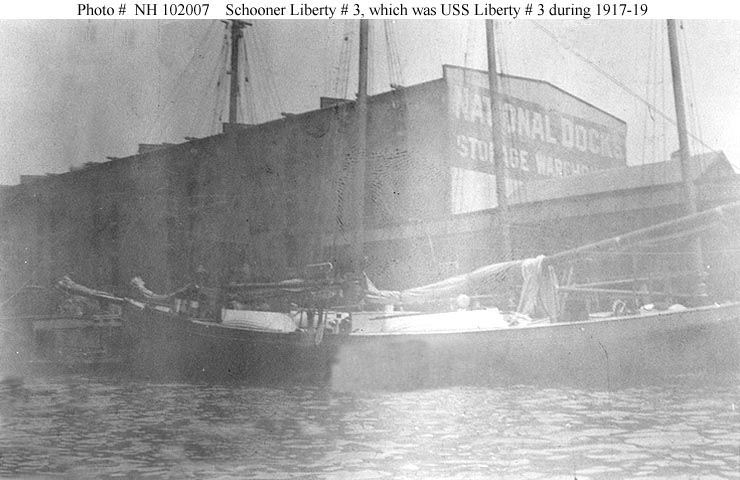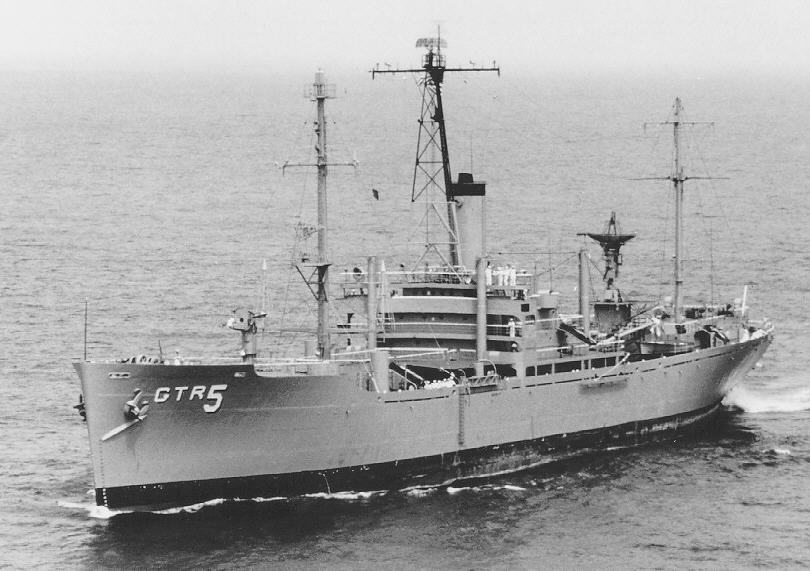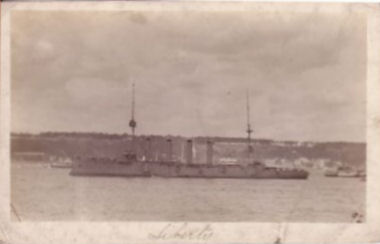|
|
Ships Named LibertySince 1775, several United States Ships have carried the name Liberty, so named for the quality or state of being free which was the dominant ideal and aspiration of the American patriots during the Revolutionary War.

1847 Former name retained; Libertad means “liberty” in Spanish. (Sch.: a. 1 9 pdr.) Libertad was built as a merchant schooner on the west coast of lower Mexico for service along the southern California seaboard. Captured from the Mexicans in company with schooner Fortuna at Lorela, Calif., 1 October 1846 by 18-gun sloop-of-war Cyane under Comdr. S. F. DuPont, the schooner was fitted for duty as a tender and was placed in service in the Navy early in 1847, Lt. T. A. M. Craven in command. Operating with Commodore Robert F. Stockton’s Pacific Squadron throughout the remainder of the Mexican War, she serviced numerous Navy ships on blockade off Mexico until the end of the war in February 1848 and then was sold at public sale.

1943 A former name retained. (IX-72: t. 622; l. 198' ; b. 44'; dr. 12') Liberty Belle (IX-72) was built in 1910 by Harlan & Hollingworth, Wilmington, Del.; acquired by the Navy 23 April 1942 from the Wilson Line on a bareboat charter; and placed in service 1 January 1943 for duty in the 5th Naval District. Assigned to experimental duty, Liberty Belle operated out of the Naval Mine Warfare Test Station, Solomons, Md., until early May 1944 when she sailed for Philadelphia. Arriving there, she was placed out of service 18 May 1944, and was returned to the Maritime Commission 10 April 1947. She was subsequently sold to Jersey Shore Lines of Atlantic Highlands, N.J., and renamed Asbury Park.

1775 Liberty I - http://history.navy.mil/danfs/l6/liberty-i.htm The quality or state of being free which was the dominant ideal and aspiration of the American patriots during the Revolutionary War. (Bch: a. 4 4-pdrs., 4 2-pdrs.) The first Liberty, a schooner built at Skenesboro, Lake Champlain for wealthy landowner Maj. Philip Skene, was captured 11 May 1775 during a raid on Skenesboro led by Capt. Samuel Herrick. The prize, named Liberty to honor the patriot cause, sailed to Fort Ticonderoga on the 13th and filled out her crew. Later that day she got underway for Crown Point where she arrived at sunset the following day. On the 16th she pushed on toward St. Jean, the British shipyard on the lake. North of Ile La Motte, the schooner was becalmed, but Arnold with a party of 35 men, pressed on in small boats. After rowing all night the raiders surprised the fort and captured sloop George, mounting 6 6-pdrs Liberty and the prize, renamed Enterprise, gave the Americans undisputed control of the entire lake. The two ships, reinforced by new vessels built at Skenesboro, supported the Continental forces during the Canadian campaign, and prepared to defend the lake when the British assumed the offensive. During the battle of Valcour Iseond, Liberty, away on a supply run, escaped the fate of most of Arnold’s fleet, only to be destroyed the following summer as Burgoyne marched south.

1918 Liberty ii - http://history.navy.mil/danfs/l6/liberty-ii.htm (Str: t. 4,809; l. 411'6"; b. 55'; dr. 26'6"; s. 11 k.; cpl. 70.; a. 1 6", 1 3") Liberty, an animal transport, was launched 19 June 1918 by Federal Shipbuilding Co., Hackensack, N.J.; acquired by the Navy 7 October 1918 and commissioned the same day, Lt. Comdr. Charles Longbottom, USNRF, in command. Assigned to NOTS, Liberty departed New York 24 October 1918, arriving Brest with her cargo of horses 8 November. For the next 6 months, Liberty made two additional cruises from New York to France discharging both animal and general cargo at French ports. Loaded with 436 tons of Army cargo and 2,072 tons of steel rails, Liberty arrived Newport News, Va., 30 April 1919 from her final cruise. She decommissioned there 7 May and was returned to the USSB the same day.

1917
http://history.navy.mil/photos/sh-civil/civsh-l/liberty3.htm
 Served as USS Liberty # 3 (SP-1229) in 1917-1919 Liberty # 3, a schooner-rigged pilot boat, was built in 1896 at Gloucester, Massachusetts. The Navy acquired her in September 1917 from the Boston Pilots Relief Society and placed her in commission in that month as USS Liberty # 3 (SP-1229). Through the rest of World War I, she served as a harbor entrance patrol boat off Boston, Massachusetts. Liberty # 3 was decommissioned in January 1919 and returned to her owner. Probably photographed at about the time she was taken over for Naval Service. She was acquired by the Navy and commissioned on 20 September 1917 as USS Liberty # 3 (SP-1229). On 8 January 1919 she was returned to her owner, the Boston Pilots Relief Society. She was also referred to as Liberty and # 3 Pilot Boat. The original print is in National Archives' Record Group 19-LCM. U.S. Naval Historical Center Photograph.

USS Liberty (AGTR-5) 1964
 (AGTR-5: dp. 7,725 (lt.); l. 455'; b. 60'; dr. 23'; s. 16 k.; cpl. 358; a. none; cl. Belmont; T. V2-S-AP3) USS Liberty (AGTR-5) was laid down under Maritime Commission contract as SS Simmons Victory by Oregon Shipbuilding Corp., Portland, Oreg., 23 February 1945; launched 6 April 1945; sponsored by Mrs. Kenneth L. Cooper; and delivered to the Maritime Commission 4 May 1945. During the closing months of World War II, Simmons Victory was chartered under general agency agreement by Coastwise (Pacific Far East) Line, San Francisco, Calif. After the war, she continued to steam the ocean shipping lanes. She saw considerable service in the Far East during the Korean conflict. On nine different runs between 18 November 1950 and 23 December 1952 she steamed to Korea to supply, and support American forces engaged in repelling Communist aggression in South Korea. Simmons Victory entered the National Defense Reserve Fleet in 1958 and was berthed in Puget Sound at Olympia, Wash. Acquired by the Navy from the Maritime Administration in February 1963, she was delivered to Willamette Iron & Steel Corp., Portland, Oreg., for conversion to a technical research ship. She was renamed Liberty and classified AG-168 on 8 June 1963. Reclassified AGTR-5 on 1 April 1964, she commissioned at Bremerton, Wash., 30 December 1964, Comdr. Daniel T. Wieland, Jr., in command. After undergoing outfitting at Bremerton, Liberty steamed to the east coast where she arrived Norfolk, Va., 23 February 1965. Assigned to Service Squadron 8, she received specialized electronics and communications equipment, and during April and early May underwent shakedown and intensive training out of Guantanamo Bay, Cuba. Loaded with advanced research and evaluation gear, she possessed the technical capabilities, as well as ready mobility, which made her a valuable contribution to the Navy’s comprehensive program of research and development projects in communications. Liberty departed Norfolk 15 June, and during the next 3 months she operated off the western coast of Africa from the Canary Islands to the Cape of Good Hope while supporting research projects. After returning to the Atlantic coast 22 October, she operated out of Norfolk until 4 January 1966 when she again deployed to African waters. During the first 8 months of 1966 she completed two such deployments, and on 1 November she sailed on her fourth cruise as a floating research and development station ship. On 2 June 1967, she sailed from Rota, Spain; and took station approximately 13 miles off the coast of El Arish, Sinai, United Arab Republic on 8 June, the fourth day of the brief Arab-Israeli War. That day, while conducting communications and electronic research operations, she was attacked by Israeli jet fighters at 1403 local time. A bomb hit portside amidships, and two or more Israeli fighters made repeated straffing, fragmentation bomb, and rocket runs over the ship. As a result, three major fires raged topside. At 1424, three motor torpedo boats, flying the Israeli flag, approached at high speed and at 1434 attacked. Five torpedoes were fired; one passed astern, a second may have passed beneath the ship, two more passed unseen, and a fifth exploded on the starboard side, forward, tearing a 39-foot-wide hole in the hull; 34 men were killed, 174 were wounded in the aircraft and torpedo boat attacks. Although severely wounded. Comdr. W. L. McGonagle, the commanding officer, remained at the conn to guide the ship out of shallow water. As the gyrocompass was knocked out, and the magnetic compass was of uncertain reliability, Commander McGonagle steered the ship, using its wake and the azimuth of the afternoon sun as reference points. Although the American flag was flying prior to both attacks, Israel maintained the attacks were due to mistaken identity. Navy fighters were launched from the America to provide air cover, and the Washington-Moscow hotline was put to use to prevent any misunderstanding that could have led to a U.S.-Soviet confrontation. Liberty arrived at Valletta, Malta 14 June in company with Little Rock. (CLG-4), America (CVA-66), Davis (DD-937), and Papago (ATF-160). After undergoing repairs, she departed Valletta 16 July for the States in company with Papago. The ships arrived Norfolk 29 July. She entered Norfolk Naval Shipyard 2 March 1968; and 28 June AGTR-5 was placed out of commission in reserve at Norfolk, and assigned to the Norfolk group of the Atlantic Reserve Fleet. Liberty was awarded the Presidential Unit Citation. Captain McGonagle received the Medal of Honor for his gallantry in saving the ship, remaining on the bridge for 17 hours, despite serious wounds, to bring the ship to safe waters. Forty-four crewmen received medals for heroism.

Frequently, Liberty hull ships and Liberty wrecks are erroneously described as "USS Liberty". For instance, a Liberty freighter that exploded in Italy in 1945 is often described erroneously as "USS Liberty". It was not. A submerged Liberty hull near Bali that is a common SCUBA attraction is described in web sites and elsewhere as "USS Liberty". It is not. A coffee table supposedly made from a "USS Liberty hatch cover" was recently offered for sale on eBay. It was not. We will use this space to try to keep the story straight. http://www.divetheworldindonesia.com/bali-diving-sites-liberty-wreck.htm

Tulamben, northeast coast of Bali The most popular Bali scuba site, the wreck is now completely covered in healthy coral growth, and the numerous structural holes provide endless opportunities for exploration. Soft corals dominate here, with crinoids, featherstars and hydroids http://www.balihotelguide.com/bali-diving/ http://www.mimpi.com/mimpi-tulamben-underwater.html

 We would welcome any information about this vessel.

2005 The newest Liberty joined the Carnival Cruise Lines fleet on July 19, 2005

2008 USS Freedom LCS-1 was designated USS Liberty during its early planning stages, but along the way the name changed to USS Freedom for reasons unknown.

|
|
 Return to the opening page
Return to the opening page
Jim Ennes and Joe Meadors
USS Liberty